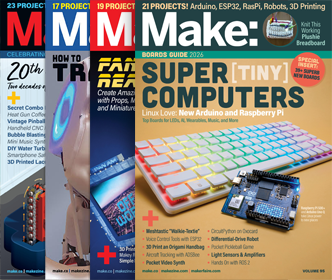
Movie theater and other high quality screens are often surfaced with tiny glass beads to provide high “screen gain,” which is a measure of the screen’s reflectivity versus a reference surface. It occurred to me it might be possible to DIY this effect on the cheap using 80-grit glass bead sandblasting media from Harbor Freight. So I bought 25 lbs and ran some tests. The short version? It works! But, as usual, not quite like I expected it to. Keep reading for all the gritty (ha) details, or just hang tight and wait for the full tutorial, coming soon!
The title image shows my twenty-three test samples against a blank white projected screen. The unlabeled white image, as well as red, green, and blue screens, are available in the gallery at the bottom of this post.
- Bare 3-ply cardboard. Same material used for middle board.
- 1 coat white paint, unsanded.
- 1 coat white paint, sanded.
- 2 coats white paint, unsanded.
- 2 coats white paint, sanded.
- 1:15 beads:paint, unsanded.
- 1:15 beads:paint, sanded.
- 1:7 beads:paint, unsanded.
- 1:7 beads:paint, sanded.
- 1:3 beads:paint, unsanded.
- 1:3 beads:paint, sanded.
- 1:2 beads:paint, unsanded.
- 1:2 beads:paint, sanded.
- 1:1 beads:paint, unsanded.
- 1:1 beads:paint, sanded.
- Beads sprinkled over 2nd coat wet paint, excess blown off when paint dry.
- Beads sprinkled over 2nd coat wet paint, excess blown and brushed off when paint dry.
- 1:7 beads:glaze.
- 1:5 beads:glaze.
- 1:3 beads:glaze.
- 1:2 beads:glaze.
- 1:1 beads:glaze.
- White melamine shelf section, sprayed with adhesive, sprinkled with beads, blown and brushed off when adhesive dry.
Bead/carrier mixtures were prepared (volumetrically) in disposable plastic cups and stirred for 1 minute each with a popsicle stick before application. Sanding was performed with a wooden block covered in 100 grit dry-use garnet abrasive paper. All carriers and bead/carrier mixtures were applied with 1″ disposable foam brushes. A fresh cup, brush, and stirrer was used for each mixture. Paint was “Kilz Casual Colors Ultra Bright White Flat,” clear glaze was “Valspar Signature Colors Clear Faux Protector Satin,” and spray adhesive was “3M Super77.”
My first concept, represented by the board to left, was to apply various mixtures of glass beads in common white interior latex paint, and then expose the embedded beads if necessary, by sanding. I prepared one too many cardboard blanks and, as an afterthought, decided I would see how well the process worked if I just sprinkled beads onto the wet paint instead of mixing them in beforehand. As a trained scientist, I should know better than to be surprised by the serendipitous results this method gave. As is evident, the bead/white paint mixtures show little if any increase in screen gain with increasing bead content, and little if any improvement over plain white paint, whether they are sanded or not.
However, the sprinkled-on beads of sample Q show a dramatic screen gain over all other samples. When the paint under the sprinkled-on beads was dry, the completely loose beads were easily removed by inversion of the surface, blowing, and light tapping. The beads that remained were not well fixed to the surface, but would not fall or blow off, either. Very light rubbing with the sanding block (or with a fingertip, as evident in sample P), was enough to remove these lightly-persistent beads and expose a thin layer of tightly-bound glass beads with the texture of sandpaper. This was the most effective surface I tested.
The middle board represents my attempt to achieve the effect of surface Q without the “sprinkling” contrivance. A clear liquid carrier was used this time. These samples R-V do show some noticeable screen gain over the opaque-carrier samples to left, but still do not really compare to sample Q. My tentative conclusion was that a thin “monolayer” of beads over a white surface is required for the high-gain effect, and sample W represents my attempt to test that hypothesis.
However, even though the spray adhesive is translucent and the underlying surface is bright white, the screen gain seen in sample W is still noticeably lacking compared to Q. My best hypothesis, at this point, is that a monolayer of glass beads each partially embedded in a white reflective medium is crucial to achieving the high-gain effect: Light enters each approximately-spherical bead from the viewing direction, and because the back of the bead is surrounded by a reflective white medium, bounces around and is reflected back out towards the viewer. In the absence of the reflective white medium surrounding the back half of each sphere, light from the viewing direction can exit the back of the bead and be trapped behind it.
ADVERTISEMENT








